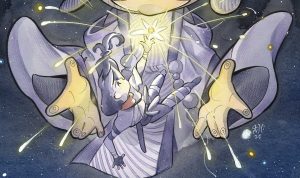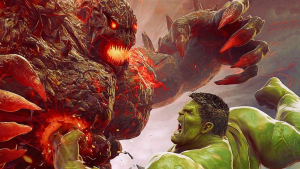When Super Mario Galaxy and its sequel first released on the Wii, they not only redefined what 3D platforming could be, but showcased some of Nintendo’s best work. The company was at its peak, putting out major hit after major hit. These games showcased Nintendo’s best attributes, the Super Mario Galaxy + Galaxy 2 Remaster have brought this fact back into the public’s eye. These games don’t just hold up—they are a testament to Nintendo’s design philosophy and quality of standard that few developers can match. Revisiting these titles is more than nostalgia, it’s a reminder of why Nintendo is among the best.
Even without the enhanced visuals and improved controls of the remaster, Super Mario Galaxy 1 & 2 are the epitome of Nintendo’s DNA. They blend imagination, precision, emotional resonance, and creativity. These aspects are what put Nintendo on the board and why its games are so successful, especially when it’s running at peak operation. We have highlighted Nintendo’s greatest aspects below and why it is one of the best developers in gaming.
One of Nintendo’s most shining qualities is its sheer creativity. Time and time again, the studio has wielded innovation and imagination effortlessly. Super Mario Galaxy is proof of this. One simple question transitioned a traditional 3D platformer into a strange and playful game: what if entire levels were self-contained planets? The result was revolutionary, allowing Nintendo to make every planet a creative experiment. This opened the door for so much possibility and variety and gave fans so much delight.
From planetoids that flipped gravity to Bee-suited Mario gliding through pollen-dusted air, the Galaxy games had such unique levels that refused to be repetitive. Players never knew what they were getting into when beginning a new level. Super Mario Galaxy 2 refined this idea and demonstrated how Nintendo evolves creativity rather than replicate it. Throughout both games, each level introduced a core idea and then exploited it to perfection before moving on to the next level. One could easily see how Astro Bot took this idea and ran with it to claim 2024’s GOTY, but Nintendo showed this talent first on the Wii.
Nintendo’s mastery of movement and level design goes hand-in-hand with its creativity. How a game feels to play matters just as much as original ideas, and Nintendo rarely neglects this area. Movement is fundamental in its games, especially platformers. Every action and ability feels deliberate and both Super Mario Galaxy 1 & 2 showcase this. Their movement isn’t just precise, but expressive. Nintendo has often described its process as “designing for the hands,” making its games fun to control outside of how it feels in-game.
When running around a planet, one might find it confusing to defy gravity. But Nintendo’s level design genius makes it feel natural and intuitive. The team didn’t just craft environments, but sculpted it around Mario’s motion. Invisible clues like camera shifts, gravity pulls, and sound effects effortlessly guide players around even the strangest places. These games embody Nintendo’s connection between the player and Mario and make it feel perfectly aligned. The Remasters take this to new heights with improved controls, but the games do not need them in order to be fun.
Nintendo has never been about graphics, which has led to many calling them developers for kids. The cartoony and colorful aesthetic has been a hallmark of the studio for generations, and Nintendo owns it and makes this its strength. While other developers chase photorealism, Nintendo aims for creating better playing games, not better looking ones. Super Mario Galaxy + Galaxy 2 Remaster once again proves this, as though there are visual improvements, this is not the point of the remaster. Even with the enhancements, the vivid colors and painterly backgrounds look stunning as well as the expressive animations.
Gameplay is fine-tuned to make the games even more fun, somehow improving on the game’s from when they first released. Every movement and sound contributes to the overall enjoyment of the game, giving it a purpose outside of looking pretty. Nintendo’s games are just a joy to play, and that’s why they impress fans so much. The moment you launch Mario into a swirl of stars, you can’t help but grin at the orchestral swell and remember that realism is not the point of gaming, but enjoyment is.
There is no denying that many games are simply chasing trends. Battle royales, extraction shooters, and more are examples of this. But Nintendo avoids this rat race, preferring to develop the games it wants to make, not wants currently popular. Look at Splatoon. No one could have seen that game coming, and the same is true for Super Mario Galaxy. Rather than competing with games on their terms, Nintendo reinvented the genre and created masterpieces along the way. Nintendo’s confidence in its titles is what gives it the edge and allows it to take these creative risks.
This doesn’t mean every risk Nintendo takes pays off. Just look at the Wii U and you’ll see that bucking tradition isn’t always the right path. But most of the time Nintendo finds success through abandoning what’s trending. Super Mario Galaxy 1 & 2 subverted expectations and the remasters continue this. They don’t add unnecessary additions, but keep the games true to their identity while making small changes in key places. Nintendo is more concerned with performance, presentation, and the enjoyment of their games than simply chasing huge sales numbers.
The greatest aspect of Nintendo is how timeless its games are. Even with the remasters, it’s incredible how well Super Mario Galaxy has aged. The games feel as fresh and innovative as they did all those years ago when they first launched on the Wii. This timelessness is a result of Nintendo’s design philosophies, many of which are seen above. Nintendo is unwavering in its dedication to the core principles of play, even in the face of evolving technology. Nintendo doesn’t care about competing in graphics or next-gen hardware, it would rather create games that are fun and can be enjoyed by all.
It’s easy to look at Nintendo’s games and think of them as simple. But underneath this is incredible depth. Mastering movement, combining mechanics, and revealing the intricate layers of its levels. This leads to how easy it is to pick up and play Nintendo’s games, whether you intend to master them or just enjoy casual play. Many of Nintendo’s visual choices look good even when other games have faded, such The Legend of Zelda: The Wind Waker. In a gaming landscape dominated by competition and spectacle, Nintendo’s work endures because it never loses sight of why we play in the first place. To feel joy, curiosity, and connection with a game’s characters and story.
What do you think? Leave a comment below and join the conversation now in the ComicBook Forum!
The post 5 Things Super Mario Galaxy + Galaxy 2 Remaster Reminded Us About Peak Nintendo appeared first on ComicBook.com.




